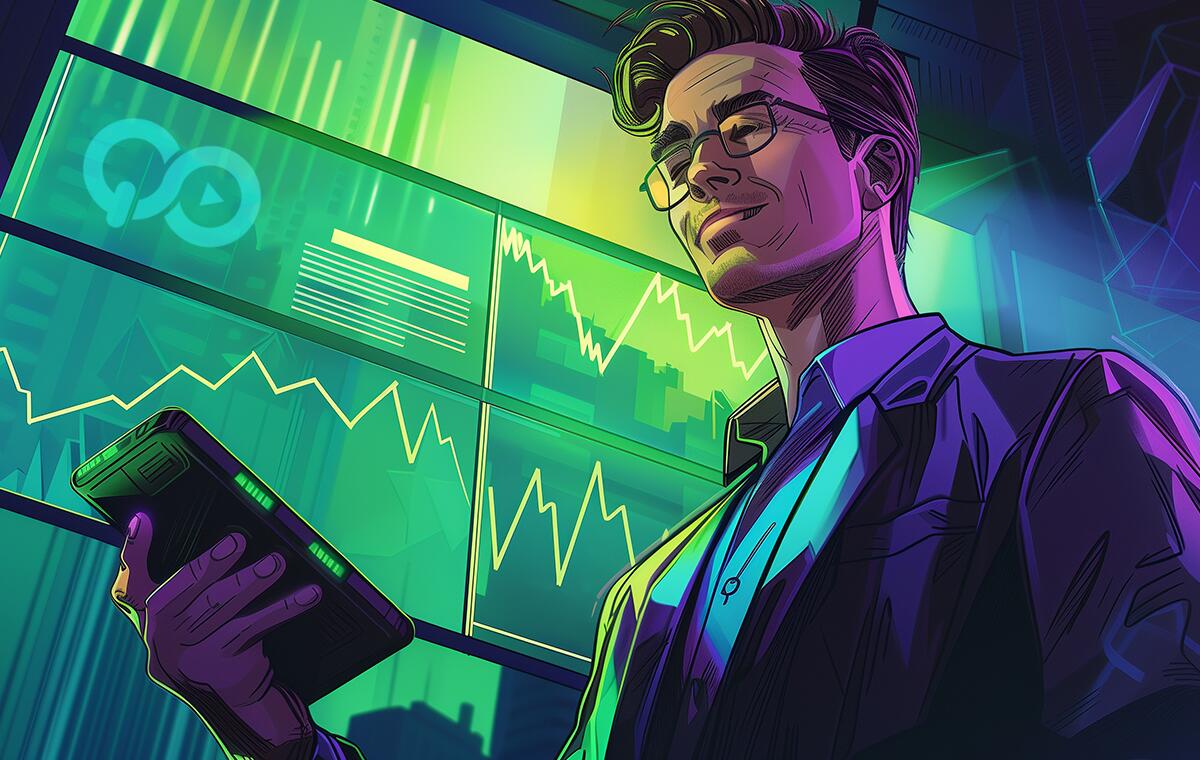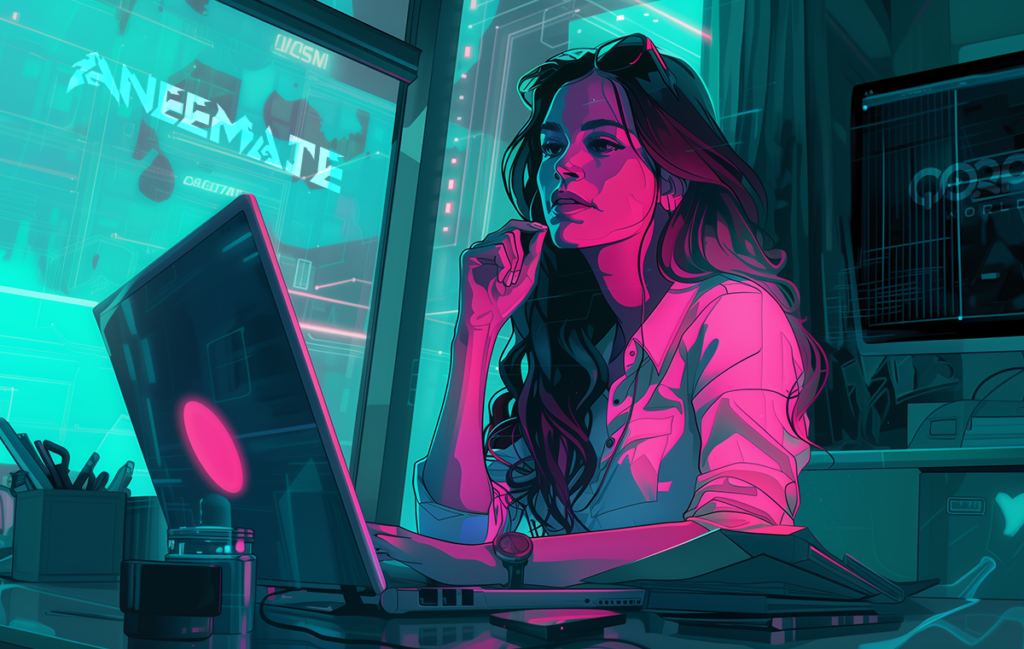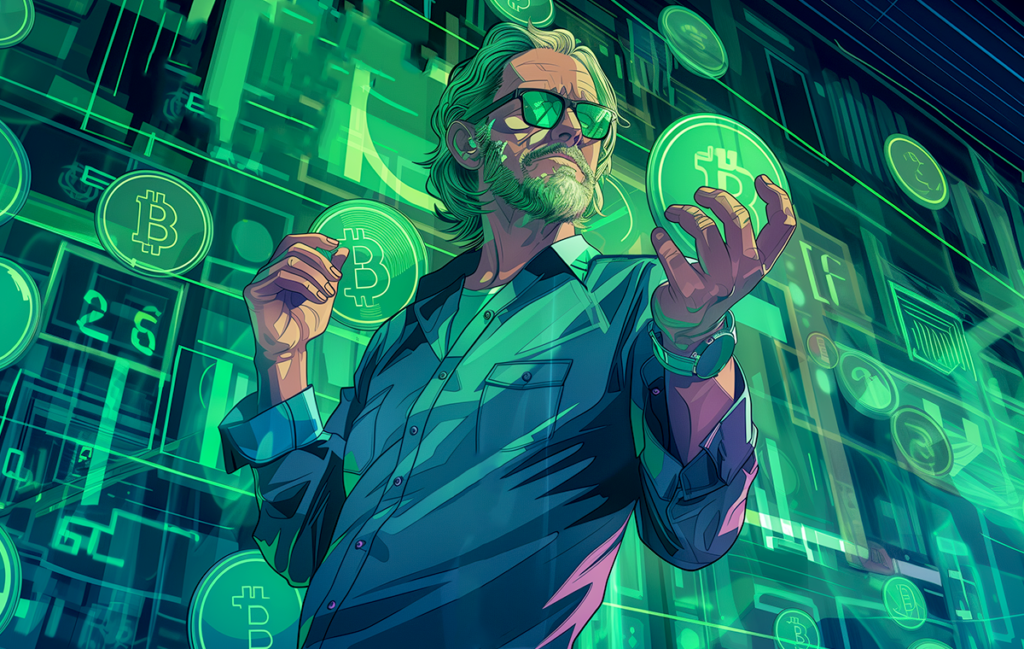
What is GameFi? A Full Overview for Complete Beginners
The concept of GameFi, blending online gaming with decentralized finance (DeFi), emerged into popularity due to a recent rise of cryptocurrencies around 2020. Since then, GameFi experienced exponential growth, accounting for 49% of overall on-chain activity in 2022.
GameFi involves play-to-earn blockchain games that incentivize players economically for their participation. Within the GameFi ecosystem, cryptocurrencies, non-fungible tokens (NFTs), and blockchain technology are utilized to craft immersive virtual gaming worlds, seeking to reach the vision of interoperable metaverse.
Currently, in these games, players can earn rewards by completing various tasks, engaging in battles with other players, and advancing through different levels of the game. Additionally, players have the opportunity to transfer their in-game assets to external platforms, such as cryptocurrency exchanges and NFT marketplaces for trading.
A GameFi Preface: Why do we play to earn?
The shift towards “play-to-earn” in the gaming industry is fundamentally driven by the desire to provide players with tangible value and ownership of their in-game assets. Traditionally, players invested time and money into games without any real-world return, accumulating digital items that had no value outside the game’s environment.
GameFi, however, revolutionizes this model by leveraging blockchain technology, allowing players to own, control, and profit from their in-game assets. This shift is not just about earning money; it’s about recognizing and valuing the time and effort players put into games.
In the GameFi ecosystem, players are rewarded with in-game currencies or NFTs for their achievements and progress, which can be traded on various platforms for real-world value. This model empowers players, turning their gaming efforts into potential financial gains. It transforms gaming from a purely recreational activity into an economic one, where the lines between gaming and investing blur.
Moreover, the decentralized nature of blockchain gives players a stake in the game’s universe, fostering a sense of community and shared ownership, which further drives the appeal of play-to-earn games.
Furthermore, the integration of DeFi solutions in GameFi adds another layer of engagement and potential earnings. Features like yield farming and staking incentivize players to engage deeper with the game, offering more sophisticated ways to grow their in-game assets. This economic empowerment and the ability to participate in the governance of the game ecosystem resonate with a growing audience that seeks more than just entertainment from their gaming experiences. Play-to-earn thus represents a paradigm shift, where players are stakeholders and beneficiaries, not just consumers.
How does GameFi work?

GameFi operates on a model vastly different from traditional video games. At its core, GameFi employs blockchain technology to fundamentally alter how players interact with and benefit from gaming environments. This model introduces a range of features and mechanisms that differentiate it from conventional gaming systems.
Blockchain Technology
The backbone of GameFi is blockchain technology. By running on a distributed ledger, GameFi projects ensure transparent and secure tracking of player ownership and transactions. This blockchain integration allows for the creation of a decentralized gaming economy where every action, transaction, and ownership is verifiable and immutable. This transparency and security are pivotal in building trust and sustainability in the GameFi ecosystem. Specifically in gaming environments, blockchain helps developers prevent hacking and cheating, which can pay off in competitive playing, such as esports tournaments.
Play-to-Earn Model
In stark contrast to the traditional “play-to-win” approach, GameFi introduces the “play-to-earn” (P2E) model. This innovative approach incentivizes players to engage with the game by offering real-world value for their in-game achievements. Rewards often come in the form of in-game cryptocurrencies or non-fungible tokens (NFTs), which can be traded or sold in external markets. This model not only rewards players for their time and skill but also opens up new economic opportunities within the gaming landscape.
NFT Asset Ownership
One of the most significant shifts GameFi brings is in terms of asset ownership. Unlike traditional games where in-game purchases are locked within the game’s ecosystem, GameFi allows players to own their in-game assets as tokenized entities. These assets, ranging from equipment to virtual real estate, can be traded or converted into real-world currencies, offering a tangible value for the player’s in-game efforts. This level of ownership empowers players and provides a sense of investment in their gaming activities.
NFT Rental
Also known as NFT lending, NFT rental is a growing concept in the blockchain space that allows users to borrow and use NFTs for a specified period of time, typically in exchange for a rental fee.
Imagine you rent out your hero for $10 for 12 hours while you’re not playing. A borrower, playing from a different time zone, uses your hero in a tournament and wins a prize. Once the rental period concludes, a smart contract automatically returns the hero to you, along with your $10 earnings. This scenario illustrates the potential of NFT rental in games, offering a way for users to monetize their assets and for others to enjoy NFT benefits without full ownership.
Integration of DeFi Elements
Many GameFi projects incorporate DeFi elements such as yield farming, liquidity mining, and staking. These features offer players additional avenues to augment their in-game assets and earnings. For instance, players can stake their tokens to earn rewards or lend their gaming assets to others for a return, introducing passive income streams within the gaming world.
- Yield Farming: This is a process in decentralized finance (DeFi) where users lend or stake their crypto assets in return for interest or additional cryptocurrency rewards. It involves moving assets around different liquidity pools to maximize return on investment.
- Liquidity Mining: A form of yield farming where participants provide liquidity to a DeFi protocol (usually by depositing two different tokens in a pool) and in return, they receive rewards. These rewards often come in the form of additional tokens from the protocol, effectively “mining” new tokens by providing liquidity.
- Staking: This refers to the act of locking cryptocurrencies to receive rewards or earn interest. In many blockchain networks, staking contributes to network security and efficiency. Users who stake their coins are often rewarded with additional coins from the network, similar to earning interest in a savings account. In games, staking allows players to lock their liquidity in tokens to reap in-game benefits, such as gaming assets, battles passes or discounts. Thus, staking can be directly tied to the gaming ecosystem.
Diverse Earning Mechanisms
GameFi provides various ways for players to earn rewards. This can range from completing tasks, engaging in battles with other players, to building and monetizing structures on virtual land. The diversity in earning mechanisms caters to different player preferences and skills, making GameFi accessible to a wide audience. Some games even allow for passive income generation through mechanisms like staking or asset lending, broadening the scope of how players can engage with the GameFi ecosystem.
Types of GameFi Economies

Dual Token Economies
Most famously, Axie Infinity’s dual token system comprises a governance token and a utility token. The former allows for voting rights and stakeholder decisions, while the latter facilitates in-game transactions and rewards. This model provides a clear division between governance and operational activities, aiming for stability within the game. However, the complexity of managing two tokens can be a significant challenge, requiring a balance between them for the game’s success.
Single Token Economies
Platforms like Sandbox use a single token for multiple purposes including governance, transactions, and rewards. The key advantage here is simplicity, as users only need to understand and manage one token. However, this simplicity can lead to challenges in balancing the token’s various roles, potentially resulting in volatility.
Ecosystem Token Economies
Ecosystem token economies, as seen in Gala Games or QORPO Game Studio, present a more intricate structure. These economies encompass multiple games or platforms within a broader ecosystem. The tokens in such economies have diverse roles and values that may vary across different games or platforms within the ecosystem. This model’s strength lies in its flexibility and the variety of uses for the tokens, catering to a broader audience and fostering a more extensive community. However, this also introduces a significant level of complexity. Managing the token’s utility and value across different segments of the ecosystem demands robust and strategic oversight to ensure the stability and growth of the overall network.
Player-driven ecosystems and DAOs
GameFi projects prioritize player engagement and empowerment, distinguishing them significantly from traditional Web2 games. In GameFi, in-game assets are not housed on centralized servers; instead, they are managed on a blockchain. This shift grants players genuine ownership of their digital assets, enabling them to monetize these assets in secondary marketplaces.
Additionally, GameFi’s commitment to a player-centric model is evident through the use of decentralized autonomous organizations (DAOs). These DAOs empower the community to participate in key decision-making processes, influencing the development and direction of the projects they support.
What are GameFi tokens and how do they work in crypto gaming

Gaming coins are digital tokens created on blockchain networks, specifically for use in gaming ecosystems. Although often called “coins,” they are technically tokens since they are not the native assets of their respective blockchains. These coins are central to player-owned economies in blockchain games, allowing players to manage, trade, and transfer virtual assets within peer-to-peer networks.
Gamified tokens offer economic opportunities as players can earn them through game participation. Fungible by nature, gaming tokens can be interchangeable and divided, but some may also exist as unique NFTs, representing specific in-game items or properties. Their blockchain base ensures transparency and ease of asset transferability within these digital gaming worlds.
Thanks to their programmable features and token standards, gaming cryptocurrencies can be tailored by game developers for a variety of purposes. Below are some key applications of these gaming digital currencies.
In-Game Currency for Versatile Use
Gaming tokens, acquired through purchase or in-game achievements, serve as a versatile in-game currency. These tokens are used for purchasing virtual goods, accessing special features, or conducting transactions with other players, bypassing the need for traditional payment methods or intermediaries. Additionally, the ability to use the same gaming tokens across multiple games creates a unified virtual economy, allowing for seamless management of resources across different gaming platforms.
Reward Programs to Enhance Engagement
Gaming tokens are integral to reward programs, where players can earn by achieving milestones, completing quests, or participating in special events. This incentivizes players, encouraging continuous engagement and fostering loyalty to the game.
Decentralized Ownership for Player Autonomy
Through gaming tokens, players experience decentralized ownership of virtual assets, giving them complete control over their in-game items, characters, or virtual real estate. This feature empowers players to have greater autonomy and manage their virtual possessions freely, akin to personalizing their digital identity through virtual items, similar to real-world possessions.
Community Engagement and Governance
Gaming tokens extend their utility to community engagement and governance. Players use their tokens to participate in decision-making processes, cast votes on game-related matters, or support community initiatives. This aspect of gaming tokens cultivates a communal atmosphere, allowing players to have a stake in the game’s evolution and fostering a sense of belonging within the gaming community.
A Glimpse Into The Future: Interoperable Metaverse Gaming Worlds
Although the idea of metaverse is still emerging and has not been immutably defined yet, the metaverse is drawing significant attention and investment from major tech companies like Microsoft, Meta, Google, Nvidia, Unity, Epic Games, and Roblox. These industry leaders are investing billions in developing virtual worlds and technologies, aiming to transform interactions, work, and socialization. Key initiatives include Microsoft’s Mesh, Meta’s rebranding and acquisitions, and Google’s VR/AR innovations. But what’s the metaverse really?
The term “the metaverse” is often used vaguely, similar to “cyberspace,” and doesn’t refer to a specific technology but rather a general shift in our interaction with technology. It might become an outdated term even as the technology it describes becomes widespread. When companies mention “the metaverse,” they usually mean technologies like virtual reality, creating persistent virtual worlds, or augmented reality that blends digital and physical elements. However, these virtual spaces aren’t limited to VR or AR access; even platforms like Fortnite, accessible via PCs, consoles, and phones, are now part of what’s being called “the metaverse.”
Another facet of metaverse venture stems from the NFT interoperability, allowing in-game hero transferable across many different games and gaming universes, although some experts argue that the concept of widespread interoperability, such as having characters from one game appear in another, is a distant goal due to numerous technical and logistical challenges. However, there’s a belief that interoperability might start to happen within games of the same franchise or from the same studio. One way or another, there is no company that has achieved such an ambitious goal yet.

